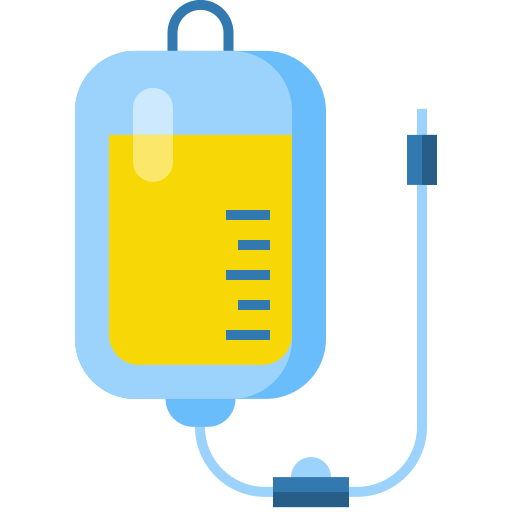
Paclitaxel
6 mg/ml
SANDOZ (A Novartis Division)
Product Details
Description
Ovarian Carcinoma: Paclitaxel is indicated as first line and subsequent therapy for the treatment of advanced carcinoma of the ovary. As first line therapy, Paclitaxel is indicated in combination with cisplatin. Breast Carcinoma: Paclitaxel is indicated for the adjuvant treatment of node-positive breast cancer administered sequentially to standard doxorubicin-containing combination chemotherapy. Paclitaxel is indicated for the treatment of breast cancer after failure of combination chemotherapy for metastatic disease or relapse within 6 months of adjuvant chemotherapy. Prior therapy should have included an anthracline unless clinically contraindicated. Paclitaxel is indicated for the first-line therapy of advanced or metastatic breast cancer either in combination with an anthracycline in patients for whom anthracline therapy is suitable or in combination with trastuzumab in patients who overexpress HER2 at a 2+ or 3+ level as determined by immuno-histochemistry. Gemcitabine, in combination of Paclitaxel, is indicated in the treatment of patients with unresectable, locally recurrent or metastatic breast cancer who have relapsed following adjuvant/neoadjuvant chemotherapy. Prior chemotherapy should have included an anthracycline unless clinically contraindicated. Paclitaxel is indicated for the treatment of metastatic cancer of the breast, in combination with trastuzumab, in patients who have tumors that over-express HER2 and who have not received previous chemotherapy for their metastatic disease. Non-Small Cell Lung Carcinoma: Paclitaxel, in combination with cisplatin, is indicated for the first line treatment of non-small cell lung cancerin patients who are not candidates for potential curative surgery and/or radiation therapy. Kaposi's Sarcoma: Paclitaxel is indicated for the second line treatment of AIDS related Kaposi's Sarcoma. Gastric Carcinoma: Paclitaxel is indicated for the treatment of Gastric Carcinoma.
Paclitaxel is contraindicated in patients with severe hypersensitivity reactions to paclitaxel, macrogolglycerol ricinoleate (polyoxyl castor oil.) Paclitaxel is contraindicated during lactation. Paclitaxel should not be used in patients with baseline neutrophils <1.5x109/I (<1x109/I for KS patients) or platelets <100x109/I (<75x109/I for KS patients). In KS, paclitaxel is also contraindicated in patients with concurrent, serious, uncontrolled infections. Patients with severe hepatic impairment must not be treated with paclitaxel.
Common: Low blood counts leading to increased risk for infection, anemia and/or bleeding, hair loss, arthralgias and myalgias, pain in the joints and muscles, peripheral neuropathy, nausea, vomiting (usually mild), diarrhea, Mouth sores, hypersensitivity reaction, fever, facial flushing, chills, shortness of breath, or hives after paclitaxel is given. Rare: swelling of the feet or ankles (edema), liver problems, low blood pressure, darkening of the skin where previous radiation treatment has been given.
Pregnancy Category D. There is no adequate data from the use of paclitaxel in pregnant women, however as with other cytotoxic medicinal products, paclitaxel may cause foetal harm when administered to pregnant women. Paclitaxel is contraindicated during lactation.
Paclitaxel should be administered under the supervision of a physician experienced in the use of cancer chemotherapeutic agents. Since significant hypersensitivity reactions may occur, appropriate supportive equipment should be available. Given the possibility of extravasation, it is advisable to closely monitor the infusion site for possible infiltration during drug administration. Paclitaxel should be given before cisplatin when used in combination. Significant hypersensitivity reactions, as characterised by dyspnoea and hypotension requiring treatment, angioedema, and generalised urticaria have occurred in <1% of patients receiving paclitaxel after adequate premedication. Fatal hypersensitivity reactions have occurred in patients despite premedication. These reactions are probably histamine-mediated. In the case of severe hypersensitivity reactions, paclitaxel infusion should be discontinued immediately. Bone marrow suppression, primarily neutropenia, is the dose-limiting toxicity. Neutrophil nadirs occurred at a median of 11 days. Frequent monitoring of blood counts should be instituted. Patients should not be retreated until the neutrophil count is ≥1.5 x 109/1 (≥1 x 109/1 for KS patients) and the platelets recover to ≥100 x 109/1 (≥75 x 109/1 for KS patients). Severe cardiac conduction abnormalities have been reported rarely with single agent paclitaxel. If patients develop significant conduction abnormalities during paclitaxel administration, appropriate therapy should be administered and continuous cardiac monitoring should be performed during subsequent therapy with paclitaxel.
Patients who experience severe neutropenia: (neutrophil count <0.5 x 109/1 for a minimum of 7 days) or severe peripheral neuropathy, should receive a dose reduction of 20% for subsequent courses (25% for KS patients). Patients with hepatic impairment: Inadequate data are available to recommend dosage alterations in patients with mild to moderate hepatic impairments. Patients with severe hepatic impairment must not be treated with paclitaxel. Pediatric use: Paclitaxel is not recommended for use in children below 18 years due to lack of data on safety and efficacy
There is no known antidote for paclitaxel overdose. In case of overdose, the patient should be closely monitored. Treatment should be directed at the primary anticipated toxicities, which consist of bone marrow suppression, peripheral neurotoxicity and mucositis. Overdoses in paediatric patients may be associated with acute ethanol toxicity.
Preparation for Intravenous Infusion: Paclitaxel Injection must be diluted prior to infusion. Paclitaxel should be diluted in 0.9% Sodium Chloride Injection, USP; 5% Dextrose Injection, USP; 5% Dextrose and 0.9% Sodium Chloride Injection, USP; or 5% Dextrose in Ringer’s Injection to a final concentration of 0.3 to 1.2 mg/ml. The solutions are physically and chemically stable for up to 27 hours at ambient temperature (below 30°C) and room lighting conditions. Parenteral drug products should be inspected visually for particulate matter and discoloration prior to administration whenever solution and container permit.
-
Support 24/7
Call us anytime -
100% Safety
Only secure payments